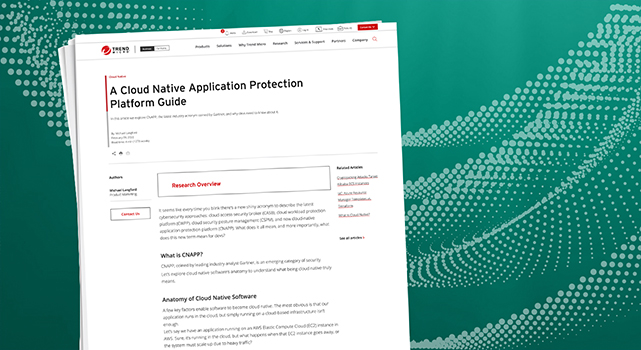What is a cloud native application protection platform (CNAPP)?


According to Gartner1, “Securing cloud-native applications offers enterprises the opportunity to redesign security approaches. Rather than treat development and runtime as separate problems — secured and scanned with a collection of separate tools — enterprises should treat security and compliance as a continuum across development and operations, and seek to consolidate tools where possible.” Ok, good for them, you may be thinking, but how does this help me?
DevOps and CNAPP
Think of it this way: the alignment between security and development teams (also known as DevOps) results in more secure apps and less build/deployment headaches. An important element of establishing a strong DevOps culture is using security tools that help security teams see all the bad stuff as quickly as possible, enabling devs to build resilient apps faster.
Ok, so how do you choose the right tool? With DevOps, this isn’t just a single-person decision; security, operations, and development teams need to weigh in on how the product(s) will help everyone do their jobs quickly and effectively to meet the overarching business goals.
Therefore, devs need to be aware of the best security architectures like CNAPP to choose the right products, ensuring apps are secure without slowing down build times.
Why CNAPP?
Security professionals aren’t developers and developers aren’t security professionals. In a recent Gartner survey, the highest rated challenge when securing cloud-native applications in a DevSecOps pipeline was a lack of internal knowledge about security.
Roadblock #1: Knowledge gap
Security professionals aren’t developers and developers aren’t security professionals. In a recent Gartner survey, the lack of internal knowledge about security was rated the biggest challenge for securing cloud-native apps in a DevOps pipeline.
This knowledge gap can lead to security teams trying to “cover all their bases” by deploying many different point products to address specific needs. In theory, this man-to-man coverage may seem effective, but in reality, it creates more mental work for already stretched teams; they’re now responsible for stitching together data from separate products.
For devs, this time-consuming manual correlation leads to delays in development workflows. Even worse, security blind spots can lead to undetected risks throughout the lifecycle until it’s too late. Research from NIST shows the later a bug is discovered, the more expensive it is to remediate.
CNAPP act as a super brain. One console with the power to correlate threat data and quickly determine risks across endpoints, containers, serverless functions, etc. This allows devs to build with confidence that their apps are as secure as possible.
Roadblock #2: Time management
Agility is the name of the cloud app game. Security testing needs to be swift and effective, allowing devs to continue on their merry way. Building off roadblock #1, we know that doing things the old-fashioned way by hand isn’t going to cut it.
To get the full benefits of a CNAPP approach, make sure your platform of choice has robust automation capabilities that can automate as many tasks, scans, and checks as possible. When organizations automate as much as possible, not only is detection much quicker, but the number of false-positive alerts are reduced.
Less false positives ensure devs are spending their valuable time investigating and remediating the highest severity and risk vulnerabilities, instead of being sent on a wild goose chase. Now that they’re spending less time on security tasks, they have more time to focus on doing what they do best—build great cloud apps.
Read More HERE




